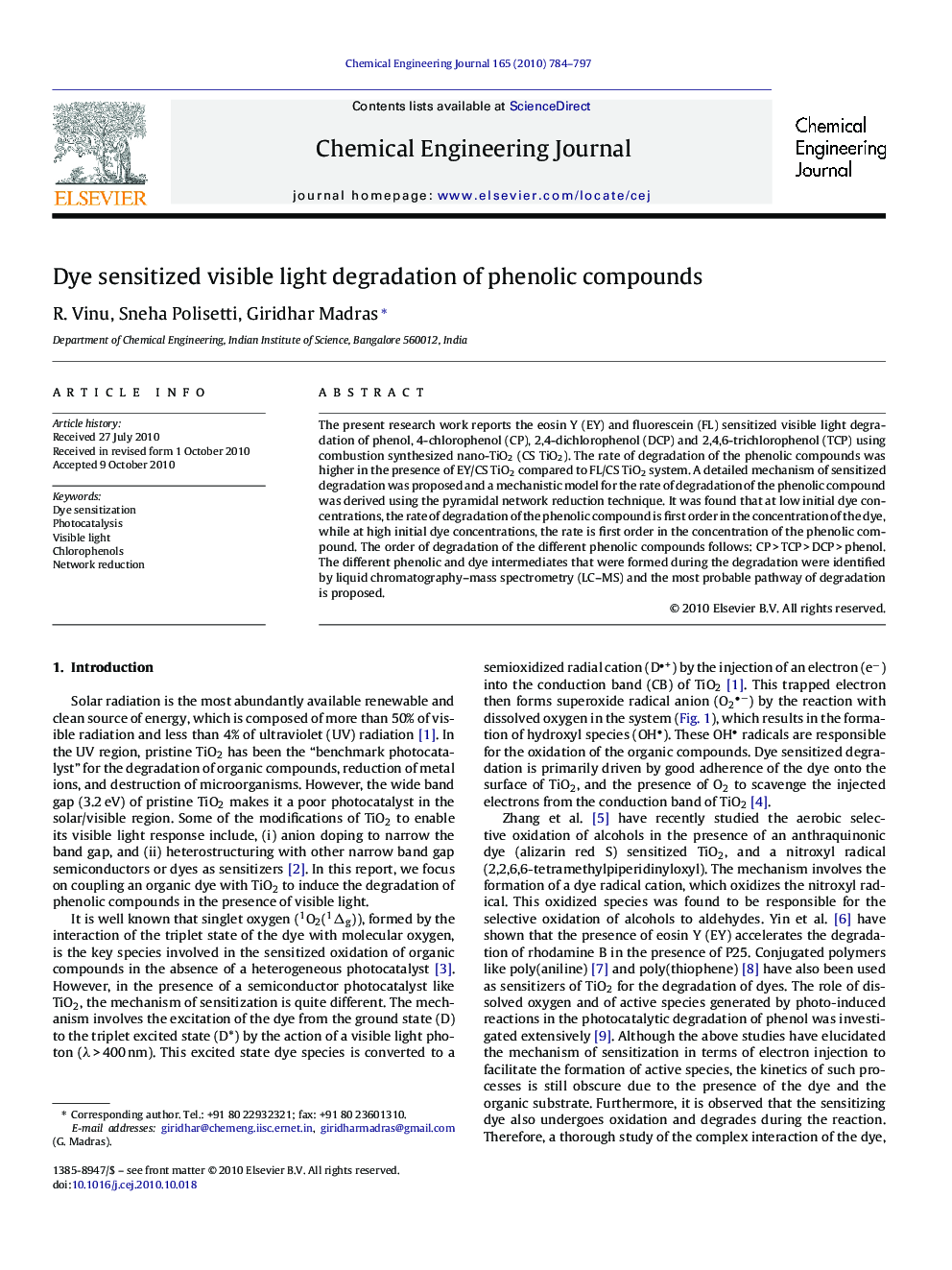| Article ID | Journal | Published Year | Pages | File Type |
|---|---|---|---|---|
| 151250 | Chemical Engineering Journal | 2010 | 14 Pages |
The present research work reports the eosin Y (EY) and fluorescein (FL) sensitized visible light degradation of phenol, 4-chlorophenol (CP), 2,4-dichlorophenol (DCP) and 2,4,6-trichlorophenol (TCP) using combustion synthesized nano-TiO2 (CS TiO2). The rate of degradation of the phenolic compounds was higher in the presence of EY/CS TiO2 compared to FL/CS TiO2 system. A detailed mechanism of sensitized degradation was proposed and a mechanistic model for the rate of degradation of the phenolic compound was derived using the pyramidal network reduction technique. It was found that at low initial dye concentrations, the rate of degradation of the phenolic compound is first order in the concentration of the dye, while at high initial dye concentrations, the rate is first order in the concentration of the phenolic compound. The order of degradation of the different phenolic compounds follows: CP > TCP > DCP > phenol. The different phenolic and dye intermediates that were formed during the degradation were identified by liquid chromatography–mass spectrometry (LC–MS) and the most probable pathway of degradation is proposed.
